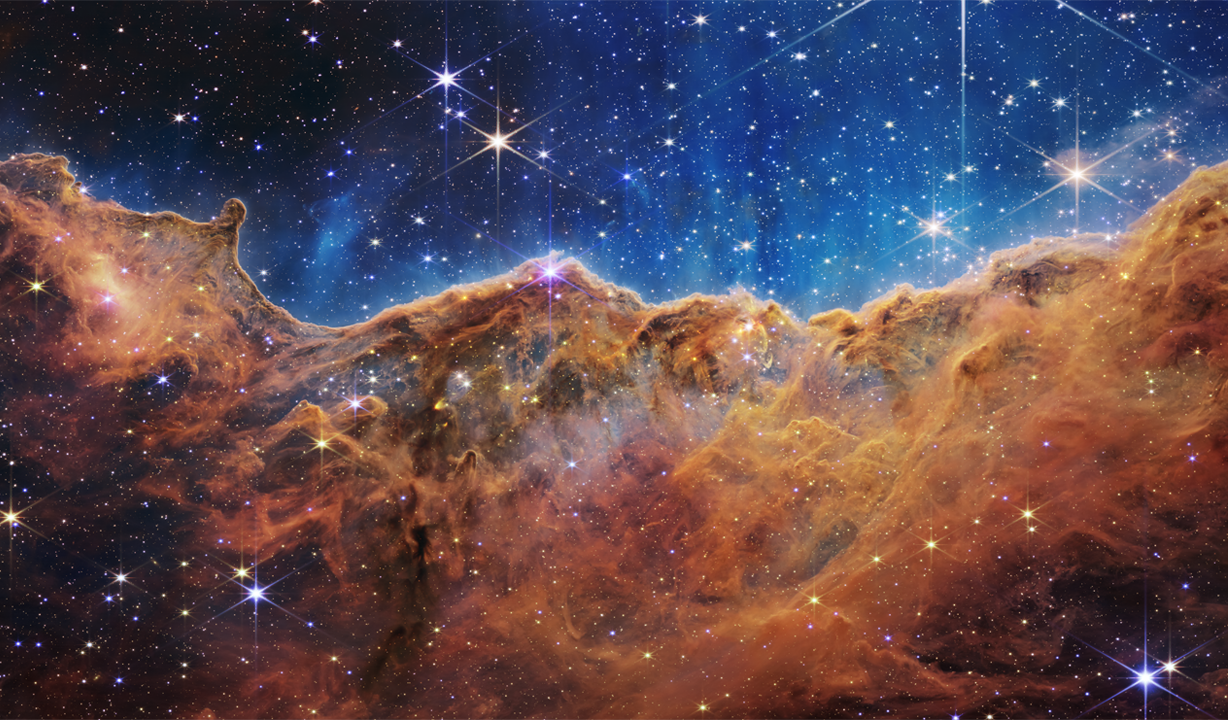
Pale Blue Dot is a famous photograph of planet Earth taken on February 14, 1990, by the Voyager 1 space probe from a record distance of about 6 billion kilometers (3.7 billion miles, 40.5 AU), as part of that day’s Family Portrait series of images of the Solar System.In the photograph, Earth’s apparent size is less than a pixel; the planet appears as a tiny dot against the vastness of space, among bands of sunlight reflected by the camera.[1]
Voyager 1, which had completed its primary mission and was leaving the Solar System, was commanded by NASA to turn its camera around and take one last photograph of Earth across a great expanse of space, at the request of astronomer and author Carl Sagan.[2] The phrase “Pale Blue Dot” was coined by Sagan in his reflections on the photograph’s significance, documented in his 1994 book of the same name.
On Feb. 14, 1990, famed scientist Carl Sagan gave us an incredible perspective on our home planet that had never been seen before.As NASA’s Voyager 1 spacecraft was about to leave our Solar System in 1989, Sagan, who was a member of the mission’s imaging team, pleaded with officials to turn the camera around to take one last look back at Earth before the spaceship left our solar system.
The resulting image, with the Earth as a speck less than 0.12 pixels in size, became known as “the pale blue dot.”
Astronauts had already taken plenty of beautiful photos of our planet at that point, and this grainy, low-resolution snapshot was not one of them.
But instead of beauty, this one-of-a-kind picture showed the immeasurable vastness of space, and our undeniably-small place within it.
Voyager 1 took a series of “family portraits” from nearly 4 billion miles away, before its camera was turned off for good. The spacecraft is now the most-distant human-made object in space at roughly 12 billion miles away, and it takes about 17 hours for it to transmit data back to Earth.
https://www.businessinsider.com/pale-bl … gan-2016-1
What Sagan later wrote about the pale blue dot:
“From this distant vantage point, the Earth might not seem of any particular interest. But for us, it’s different. Consider again that dot. That’s here. That’s home. That’s us.On it everyone you love, everyone you know, everyone you ever heard of, every human being who ever was, lived out their lives.
The aggregate of our joy and suffering, thousands of confident religions, ideologies, and economic doctrines, every hunter and forager, every hero and coward, every creator and destroyer of civilization, every king and peasant, every young couple in love, every mother and father, hopeful child, inventor and explorer, every teacher of morals, every corrupt politician, every ‘superstar,’ every ‘supreme leader,’ every saint and sinner in the history of our species lived there – on a mote of dust suspended in a sunbeam.
The Earth is a very small stage in a vast cosmic arena. Think of the rivers of blood spilled by all those generals and emperors so that in glory and triumph they could become the momentary masters of a fraction of a dot. Think of the endless cruelties visited by the inhabitants of one corner of this pixel on the scarcely distinguishable inhabitants of some other corner.
How frequent their misunderstandings, how eager they are to kill one another, how fervent their hatreds. Our posturings, our imagined self-importance, the delusion that we have some privileged position in the universe, are challenged by this point of pale light.
Our planet is a lonely speck in the great enveloping cosmic dark.
In our obscurity – in all this vastness – there is no hint that help will come from elsewhere to save us from ourselves.
The Earth is the only world known, so far, to harbor life. There is nowhere else, at least in the near future, to which our species could migrate.
Visit, yes. Settle, not yet. Like it or not, for the moment, the Earth is where we make our stand. It has been said that astronomy is a humbling and character-building experience. There is perhaps no better demonstration of the folly of human conceits than this distant image of our tiny world.
To me, it underscores our responsibility to deal more kindly with one another and to preserve and cherish the pale blue dot, the only home we’ve ever known.”
https://www.businessinsider.com/pale-bl … gan-2016-1
In the now-iconic image, a small, unobtrusive pinprick of light hovers amid a ray of scattered sunlight, appearing cosmically inconsequential. The photo’s legacy is that it has inspired the opposite response: a deep recognition of Earth’s importance, its fragility, its uniqueness.
https://debatingchristianity.com/forum/viewtopic.php?p=1094110#p1094110
